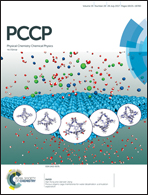- EN - English
- CN - 中文
Xenopus laevis Oocytes Preparation for in-Cell EPR Spectroscopy
制备非洲爪蟾卵母细胞用于细胞内EPR光谱学分析
发布: 2018年04月05日第8卷第7期 DOI: 10.21769/BioProtoc.2798 浏览次数: 8085
评审: Marc-Antoine SaniAnca SavulescuAnonymous reviewer(s)
Abstract
One of the most exciting perspectives for studying bio-macromolecules comes from the emerging field of in-cell spectroscopy, which enables to determine the structure and dynamics of bio-macromolecules in the cell. In-cell electron paramagnetic resonance (EPR) spectroscopy in combination with micro-injection of bio-macromolecules into Xenopus laevis oocytes is ideally suited for this purpose. Xenopus laevis oocytes are a commonly used eukaryotic cell model in different fields of biology, such as cell- and development-biology. For in-cell EPR, the bio-macromolecules of interest are microinjected into the Xenopus laevis oocytes upon site-directed spin labeling. The sample solution is filled into a thin glass capillary by means of Nanoliter Injector and after that microinjected into the dark animal part of the Xenopus laevis oocytes by puncturing the membrane cautiously. Afterwards, three or five microinjected Xenopus laevis oocytes, depending on the kind of the final in-cell EPR experiment, are loaded into a Q-band EPR sample tube followed by optional shock-freezing (for experiment in frozen solution) and measurement (either at cryogenic or physiological temperatures) after the desired incubation time. The incubation time is limited due to cytotoxic effects of the microinjected samples and the stability of the paramagnetic spin label in the reducing cellular environment. Both aspects are quantified by monitoring cell morphology and reduction kinetics.
Keywords: Xenopus laevis oocytes (非洲爪蟾卵母细胞)Background
Electron paramagnetic resonance (EPR) spectroscopy is the method of choice for characterization of paramagnetic systems (Atherton, 1993; Gerson et al., 1994; Jeschke and Schweiger, 2001). Diamagnetic bio-macromolecules can be made accessible for EPR spectroscopy by site-directed spin labeling (SDSL), commonly using nitroxides as spin labels (Hubbell and Altenbach, 1994; Feix and Klug, 2002; Likhtenshtein et al., 2008; Berliner and Reuben, 2012). The combination of SDSL with in-cell EPR spectroscopy is a powerful tool to gain information about structure and dynamics of bio-macromolecules such as proteins or nucleotides in their natural environment (Azarkh et al., 2013; Martorana et al., 2014; Qi et al., 2014; Cattani et al., 2017). The most common experimental procedure for the fledging technique of in-cell EPR is based on the microinjection of the target molecules into oocytes from the African frog Xenopus laevis, which are a widely used eukaryotic cell model (Kay, 1991; Barnard et al., 1982; Mishina et al., 1984; Dawid and Sargent, 1988; Richter, 1999).
The advantages of Xenopus laevis oocytes for in-cell EPR are the large size of approximately 1 mm in diameter (approximately 1 µl cell volume), the resulting easy handling and the fact that only three or five of them are required for an in-cell EPR sample (Qi et al., 2014; Cattani et al., 2017). Consequently, bio-macromolecules can be introduced relatively easily in the quantity required for EPR measurements into the Xenopus laevis oocyte by microinjection. Hence, there have been numerous intracellular distance measurements of spin labelled DNA and proteins performed by double electron-electron resonance (DEER) measurements after microinjection into Xenopus laevis oocytes (Igarashi et al., 2010; Azarkh et al., 2011; Krstic et al., 2011; Azarkh et al., 2013; Martorana et al., 2014; Wojciechowski et al., 2015; Cattani et al., 2017).
Materials and Reagents
- Glass capillaries (3.5 inch length, Drummond Scientific, catalog number: 3-000-203-G/X )
- Single-use syringe (Sigma-Aldrich, catalog number: Z230723 )
- Parafilm (Sigma-Aldrich, catalog number: P7793-1EA )
- Petri dish, size 60 x 15 mm (Corning, catalog number: 430166 )
- Razor blade (Plano, catalog number: T5016 )
- Pasteur capillary pipette (150 mm, WU Mainz)
- Brand pipette controller micro-classic (BRAND, catalog number: 25900 )
- Q-band sample tubes (quartz glass, 1 mm i.d., Bruker, catalog number: ER 221TUB-Q10 )
- Hamilton syringe (Hamilton, catalog number: 80500 )
- Petri dish, size 35 x 10 mm (Corning, catalog number: 430165 )
- Capillary tube sealing compound (Cha-seal, DWK Life Sciences, Kimble, catalog number: 43510 )
- Xenopus laevis oocytes on stage V/VI in MBS buffer (Ecocyte Bioscience, ecocyte-us.com/products/xenopus-oocyte-delivery-service/)
- Modified Barth’s Saline (MBS) buffer (1x) (Ecocyte Bioscience) (88 mM NaCl, 1 mM KCl, 1 mM MgSO4, 5 mM HEPES, 2.5 mM NaHCO3, 0.7 mM CaCl2)
- Mineral oil (Sigma-Aldrich, catalog number: M5904 )
- Liquid nitrogen
- 3-Maleimido-PROXYL (3-Maleimido-2,2,5,5-tetramethyl-1-pyrrolidinyloxy) (Sigma-Aldrich, catalog number: 253375 )
Equipment
- Flaming/Brown Micropipette Puller (Sutter Instrument, model: P-97 )
- Nanoject II Auto-Nanoliter Injector (Drummond Scientific, catalog number: 3-000-205A )
- Micromanipulator MM33 (Drummond Scientific, catalog number: 3-000-024-R ) with Support Base (Drummond Scientific, catalog number: 3-000-025-SB )
- Binocular microscope (ZEISS, model: Stemi 2000-C , attended with an AxiaCam ERc 5s camera (ZEISS, model: AxiaCam ERc 5s ))
- Home-built polytetrafluoroethylene holder
- Dewar for liquid nitrogen (KGW-Isotherm, catalog number: 1021 )
- -80 °C freezer
Procedure
文章信息
版权信息
© 2018 The Authors; exclusive licensee Bio-protocol LLC.
如何引用
John, L. and Drescher, M. (2018). Xenopus laevis Oocytes Preparation for in-Cell EPR Spectroscopy. Bio-protocol 8(7): e2798. DOI: 10.21769/BioProtoc.2798.
分类
生物物理学 > EPR波谱 > 细胞内
您对这篇实验方法有问题吗?
在此处发布您的问题,我们将邀请本文作者来回答。同时,我们会将您的问题发布到Bio-protocol Exchange,以便寻求社区成员的帮助。
Share
Bluesky
X
Copy link












